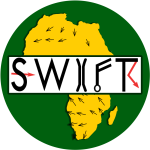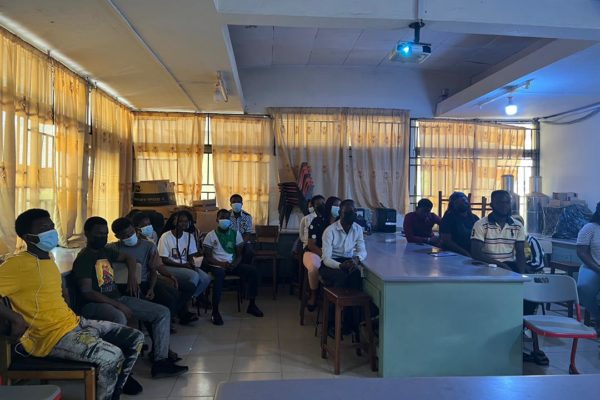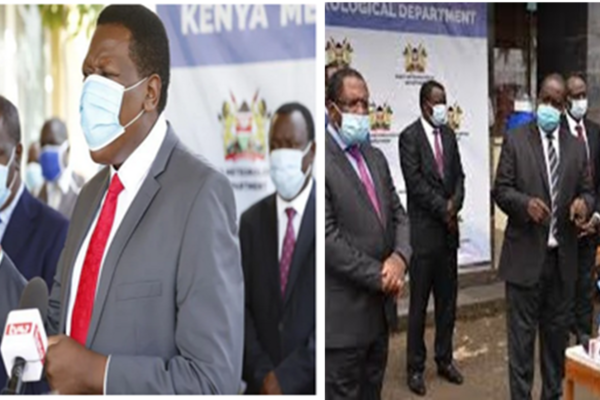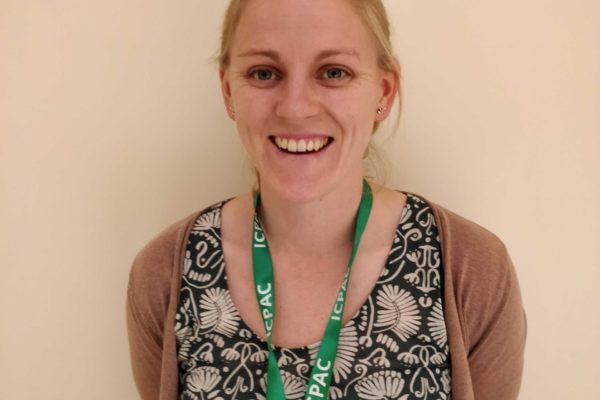GCRF African SWIFT Impact Case Studies

The output of interdisciplinary projects throughout GCRF African SWIFT has protected lives and improved livelihoods of many people across Africa. Work carried out through SWIFT has enabled various applications, including the ability to store energy more efficiently, improved responses to severe weather-related events and has developed better forecaster training.
Through the use of novel weather forecasting testbeds and coproduction methods, partners from universities and national meteorological services in Ghana, Kenya, Niger, Nigeria, Senegal and the UK collaborated on numerous projects which will have a lasting positive impact for years to come.
To highlight these positive impacts, we have collated case studies on some of the collaborations that took place in SWIFT. These reports aim to demonstrate the breadth of impacts SWIFT has had, whilst also providing additional detail on how the work of SWIFT led to positive change. The list of case studies are by no means as exhaustive as the work conducted has also had influence in further areas. Additional information about SWIFT impacts can be found in the archives.
Technical terms are explained in each article, and we have also produced a glossary of terms used across all case studies. All information, quotes and pictures were collated between January and March 2022
The co-development of a meningitis sub-seasonal early warning system
Through the collaboration and hard work of weather forecast producers, scientists, and health-sector forecast users, a key outcome of GCRF African SWIFT has been a sub-seasonal forecast warning system of meningitis outbreaks. The product gives local and national health agencies more time to activate emergency response plans to predicted meningitis outbreaks. This collaboration has been…
Continue Reading The co-development of a meningitis sub-seasonal early warning system
Training Developments at NiMet and KNUST
Helping to develop capacity for forecaster training in Africa is a central aim of the SWIFT programme. In the Nigerian Meteorological Agency (NiMet) and the Kwame Nkrumah University of Science and Technology (KNUST), Ghana, forecaster training programmes have seen notable developments in recent years, partly due to work carried out through SWIFT. The project has…
New Forecasting Products Developed Through SWIFT Are Used Across Africa
GCRF African SWIFT has facilitated the introduction of innovative forecasting techniques into operational forecast centres in Africa. The project has built the capacity of personnel in both research and operational organisations and has strengthened links between organisations, allowing African centres to develop and implement products themselves. The project has worked on developing forecasts on a…
Continue Reading New Forecasting Products Developed Through SWIFT Are Used Across Africa
Using SWIFT short term forecasting products to respond to severe weather-related events in Kenya
Kenya Meteorological Department (KMD – the national operational weather service of Kenya) is one of a number of African organisations that has worked on producing new forecasting tools as a part of SWIFT. Through SWIFT, KMD has worked with research organisations and forecast users1 to make forecasting products that have already seen life-saving applications during…
Masilin Gudoshava: How SWIFT has Helped to Build Capacity in Africa and the UK
Masilin Gudoshava was a member of the SWIFT executive committee as SWIFT lead for the Intergovernmental Authority on Development (IGAD) Climate Prediction and Applications Centre (ICPAC). As well as her management role, she has carried out research, co-authored 7 papers, and helped to develop operational forecasting products. According to Steve Woolnough, a SWIFT colleague based…
Continue Reading Masilin Gudoshava: How SWIFT has Helped to Build Capacity in Africa and the UK
Marian Osei: How SWIFT has Helped to Build Capacity in Africa and the UK
At the start of SWIFT in 2017, Marian Osei was a PhD student carrying out her doctoral research at Kwame Nkrumah University of Science and Technology (KNUST) in Kumasi, Ghana. Through SWIFT she has: published four international papers; led international science collaborations; delivered training to African colleagues across the continent; and is about to embark…
Continue Reading Marian Osei: How SWIFT has Helped to Build Capacity in Africa and the UK
Linda Hirons: How SWIFT has Helped to Build Capacity in Africa and the UK
Linda Hirons is a researcher in the National Centre for Atmospheric Science (NCAS) at the University of Reading. Within SWIFT she was co-lead for the project’s work programme on seasonal to sub-seasonal (2-4 week) weather prediction, a strand that works to advance both scientific and operational capacity on these timescales. According to Ben Lamptey, Africa…
Continue Reading Linda Hirons: How SWIFT has Helped to Build Capacity in Africa and the UK
How SWIFT Has Influenced Curricula in Partner Training Institutions
GCRF African SWIFT has enabled African meteorological training institutions to update their curricula to improve teaching of practical forecasting skills and to incorporate innovative forecasting methods into teaching. Through SWIFT, collaborations between research and operational communities have been strengthened so training resources can be effectively shared and curricula can be developed with a broader awareness…
Continue Reading How SWIFT Has Influenced Curricula in Partner Training Institutions
SWIFT’s Impacts on Policy in the International Organisations Responsible for African Weather Forecasting
By helping partner countries to make step changes in forecasting capacity, GCRF African SWIFT has made international organisations aware of the potential for improvements in African forecasting. This has already influenced policy in some cases and will in future raise the profile of African meteorology on an international level. SWIFT has worked collaboratively with the…
SWIFT has pioneered the co-production of bespoke forecast services through real-time testbeds
Co-production is the process of bringing together different knowledge sources, experiences and working practices to jointly develop new and combined knowledge for addressing societal problems of shared concern. GCRF African SWIFT has pioneered the use of co-production to develop weather forecasting tools by bringing together researchers, forecast producers, and forecast users to co-create real-time forecasts…
Glossary
Co-production – a method of producing forecast tools that involves researchers, forecast producers and forecast users.
Forecast Product – a tool for making weather forecasts. There are often several possible methods for making a weather forecast, and methods are generally different on different timescales. The term is used to distinguish between these methods.
Nowcasting – the use of real-time data to provide immediate information on hazards, and to forecast the development of those hazards over the coming hours.
Seasonal Forecasting – forecasting carried out 1-2 months in advance of a weather event.
Sub-Seasonal Forecasting – forecasting carried out 2-4 weeks in advance of a weather event.
Testbed – interdisciplinary forecast development project where forecasts are constantly created and evaluated for accuracy in real time. SWIFT testbeds used co-production, so involved both research and operational communities.
Users – people, groups and organisations that use weather forecasts. Examples include:
– People living in areas that are susceptible to severe weather;
– Farmers and agriculture organisations;
– Governments;
– Transport companies.










